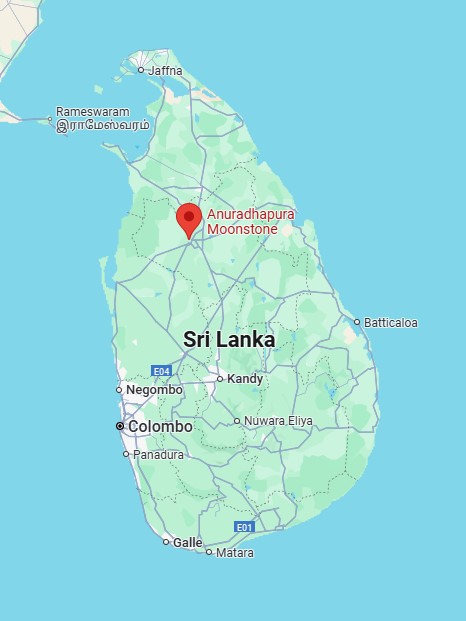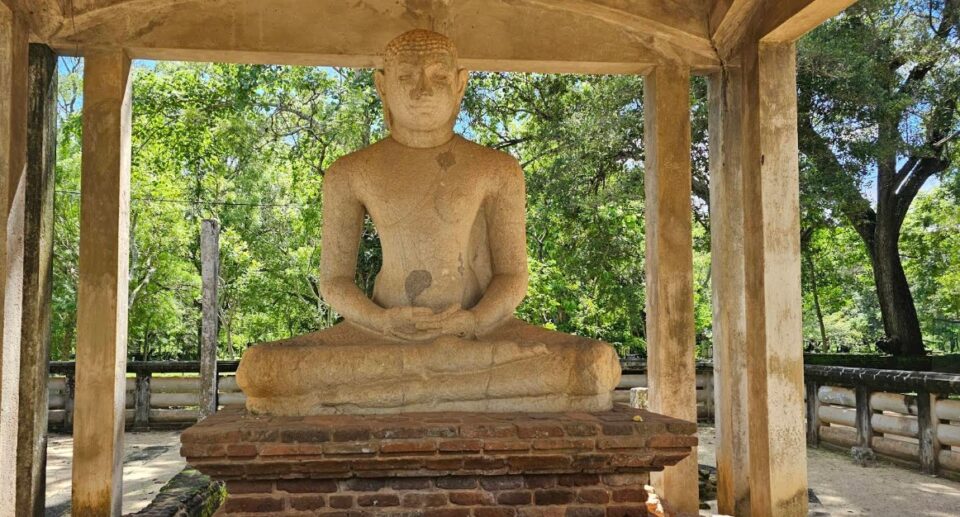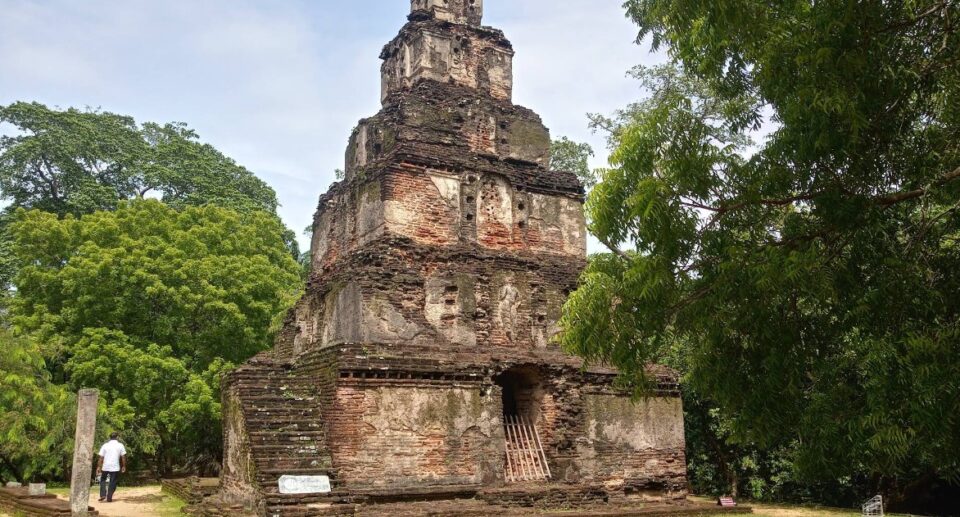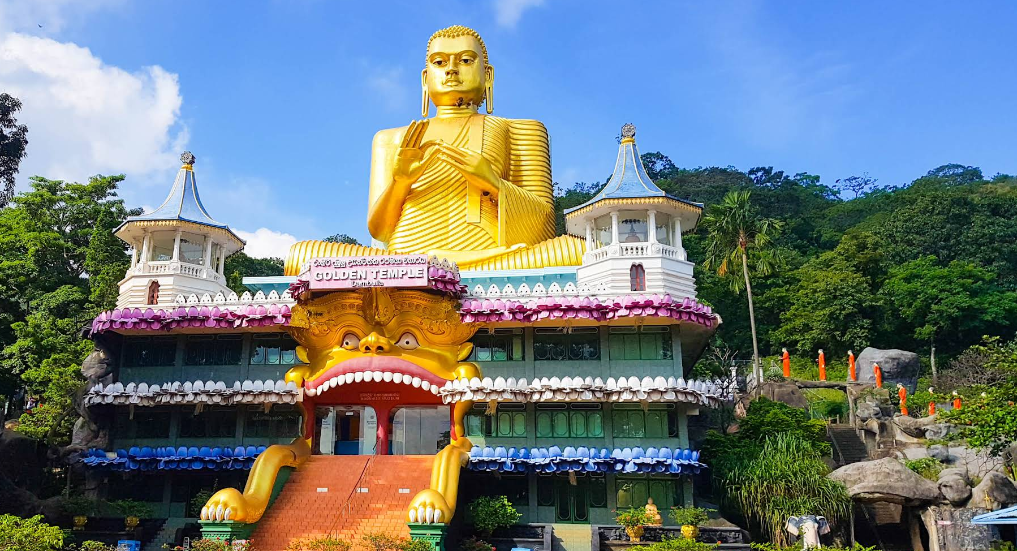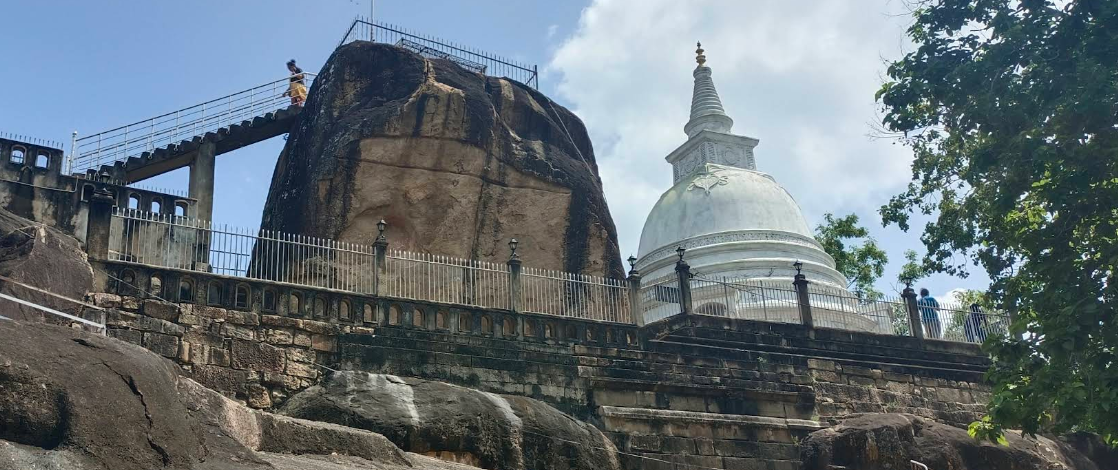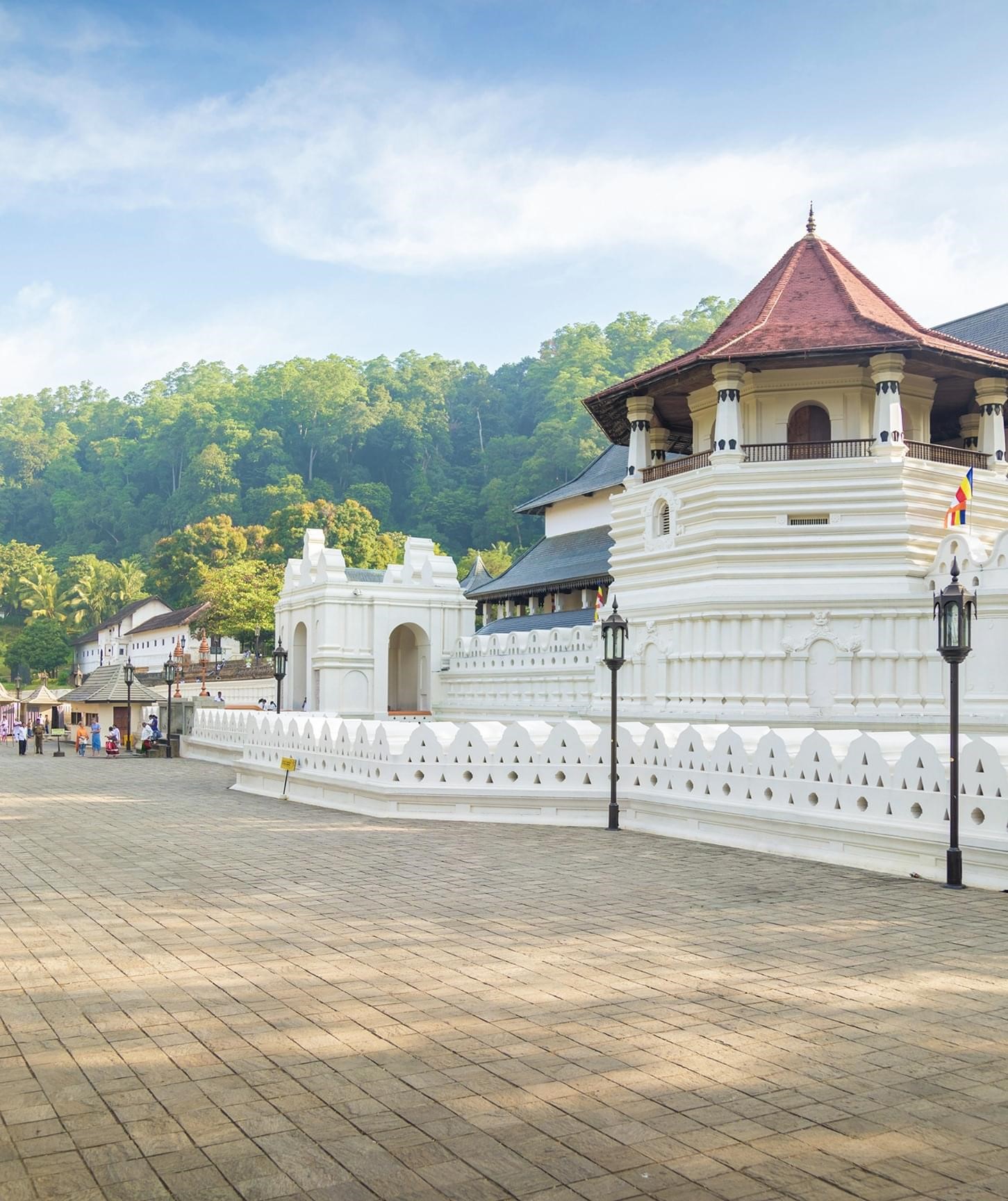Sandakada Pahana: The Moonstone of Sri Lankan Heritage
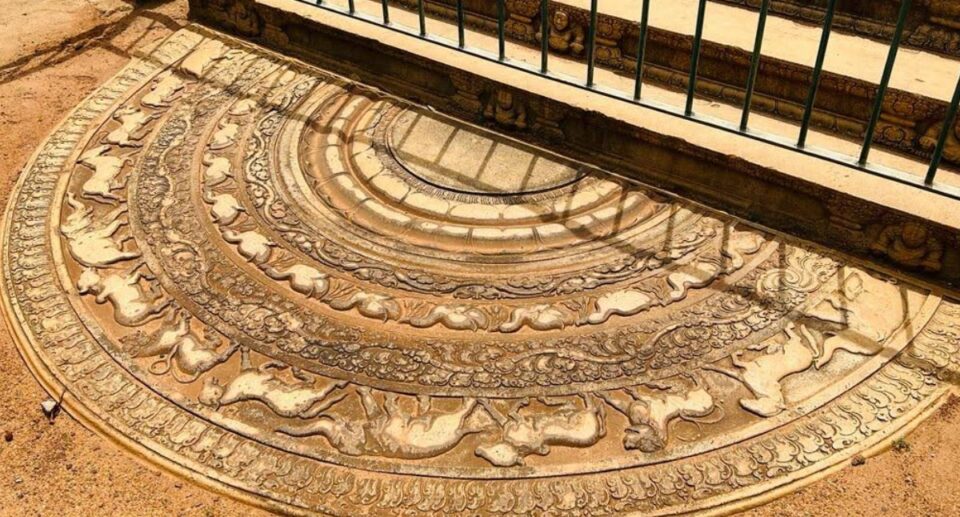
The Sandakada Pahana, or Moonstone, is one of the crowning artistic and architectural achievements of ancient Sri Lanka, and it has a unique and venerable place. The Sandakada Pahana, which is found primarily at the thresholds of Buddhist temples and monasteries of the Anuradhapura and Polonnaruwa periods, is more than a mere ornament but a symbolic gateway to spiritual holiness. Rich in religious symbolism, intricate workmanship, and cultural importance, the moonstone represents the spiritual journey to enlightenment and stands as a testament to the brilliance of the ancient Sinhalese civilization.
Origin and Historical Context
The Sandakada Pahana originated in the Anuradhapura period (3rd century BCE – 10th century CE), a golden age of Sri Lankan civilization and Buddhist culture. The design was typically placed at the bottom of steps leading to sacred spaces such as stupas, Buddhist temples, and monasteries. The earliest moonstones unearthed were less complicated in design, evolving into more complex and symbolically dense carvings over the centuries.
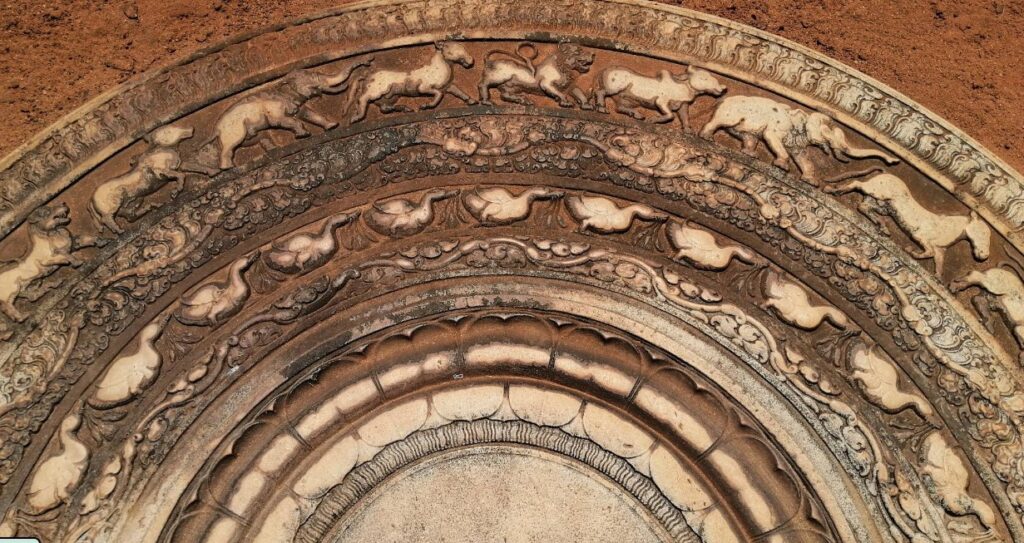
As the Sinhalese architectural traditions matured during the Polonnaruwa period (11th–13th centuries), the moonstone became more refined, reaching its aesthetic pinnacle. Though moonstones disappeared in later periods from religious architecture, especially with the beginning of foreign influences and internal changes in Buddhist thought, they remain a lasting testament to Sri Lanka’s ancient glory and religious artistry.
Structure and Design Elements
A standard Sandakada Pahana is a semi-circular stone slab with artistic carvings, set into the entrance of a building. Though varying in detail according to the time and location, the most representative Anuradhapura moonstone possesses concentric bands or semi-circular rings, each of which is filled with symbolic carvings.
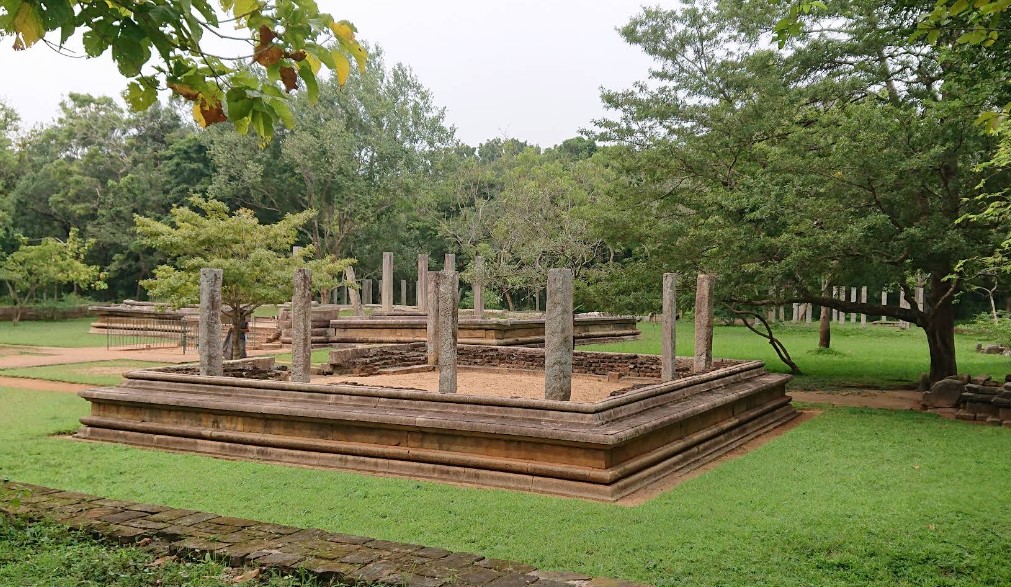
They normally consist of: Outer Band – Flames or Liyavel:
The outermost band often has a circular ring of flames, which depicts desire (tanha) as one origin of suffering in Buddhism.
Animals of the circular procession: Within the flame circle is another circle often depicted with elephants and lions and horses and bulls. These animals describe the ongoing cycles of birth and aging, disease and death-characteristics of samsara, or the wheel of rebirth.
Creeper or Foliage Band (Liyavel):
This flower pattern depicts worldly desire and attachment—something that makes beings go around in the cycle of misery.
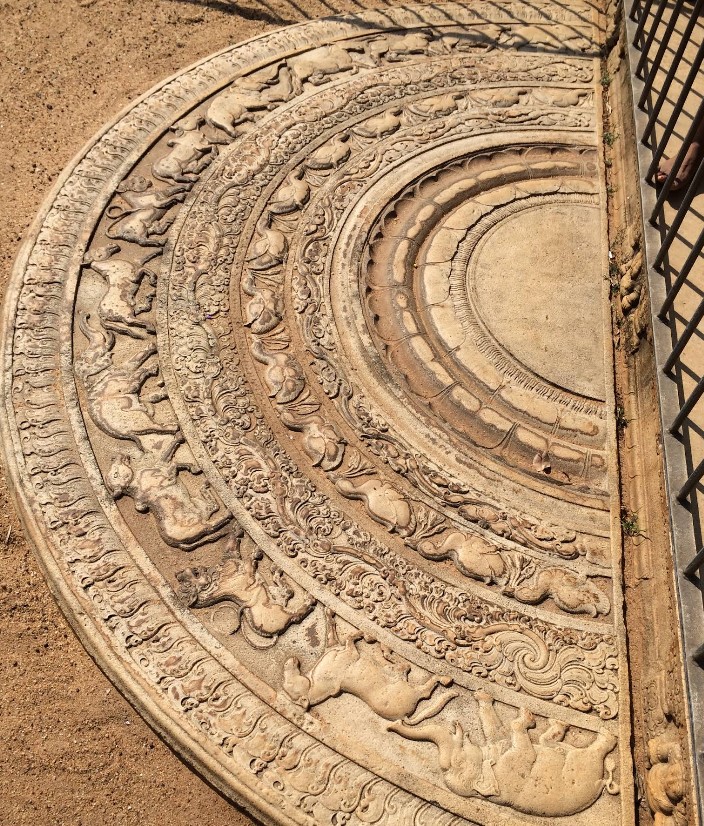
Swan Band (Hansa):
Swans are supposed to divide milk from water; by their presence embody separating good from evil—about the discerning one’s dividing line between right and wrong in the spiritual journey.
Innermost Lotus Blossom (Nelum Mal):
At the center of the lotus flower is a carefully crafted lotus flower, which is a symbol of purity and spiritual awakening. In Buddhist art, the lotus is a symbol of enlightenment, which rises unsoiled out of the mud.
This pattern creates a powerful visual metaphor: as one steps over the moonstone and enters a sacred space, he or she symbolically relinquishes worldly desire and suffering and takes the first step on the path toward spiritual liberation.
Symbolism and Religious Significance
This implies that each section of the Sandakada Pahana signifies a phase in the Buddhist journey, a progression from ignorance to enlightenment. Rather than a purely decorative feature in architecture, the moonstone is firmly rooted in Buddhist philosophy. The flames outside signify burning desire, which leads to suffering. The parade of animals depicts the recurring suffering of life through samsara. The vine band signifies being entwined in worldly desires.
The swans indicate the direction of cultivating wisdom. The lotus symbolizes the final goal—Nirvana, a state of perfect peace and liberty.
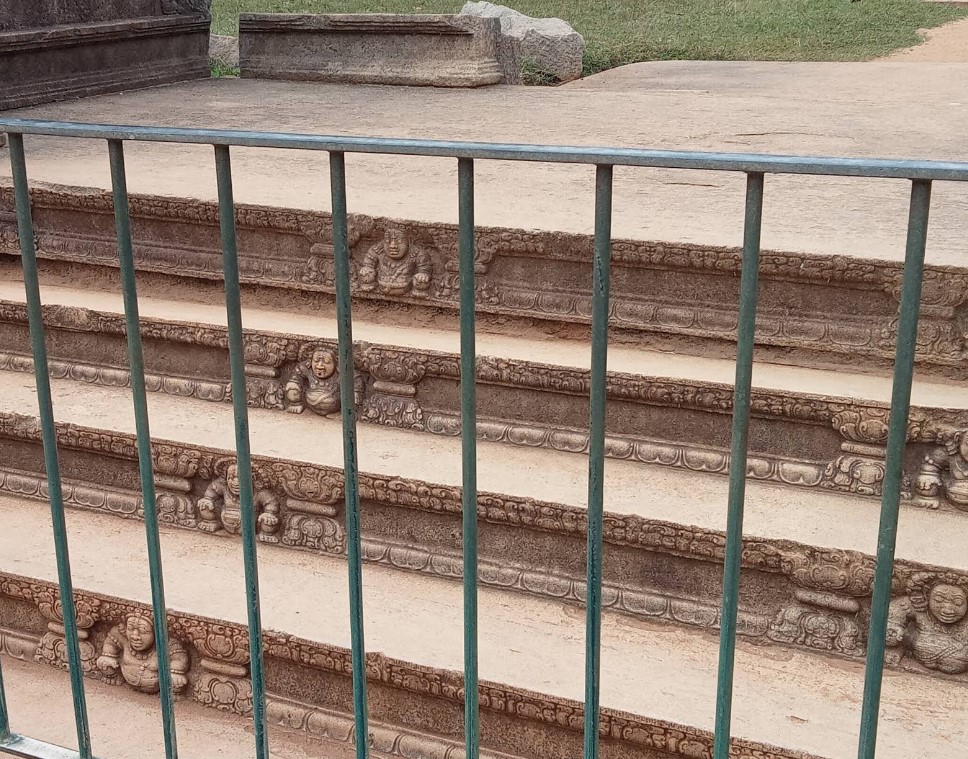
The moonstone is thus not just a threshold in the physical sense but also a symbolic boundary between the profane and the sacred, pain and redemption.
Artistic Mastery and Craftsmanship
It required much expertise and understanding of both Buddhist doctrine and the craft of stone carving to fashion a Sandakada Pahana. Traditional craftsmen cut intricate details into solid stone, typically granite or limestone, with chisels and hammers.
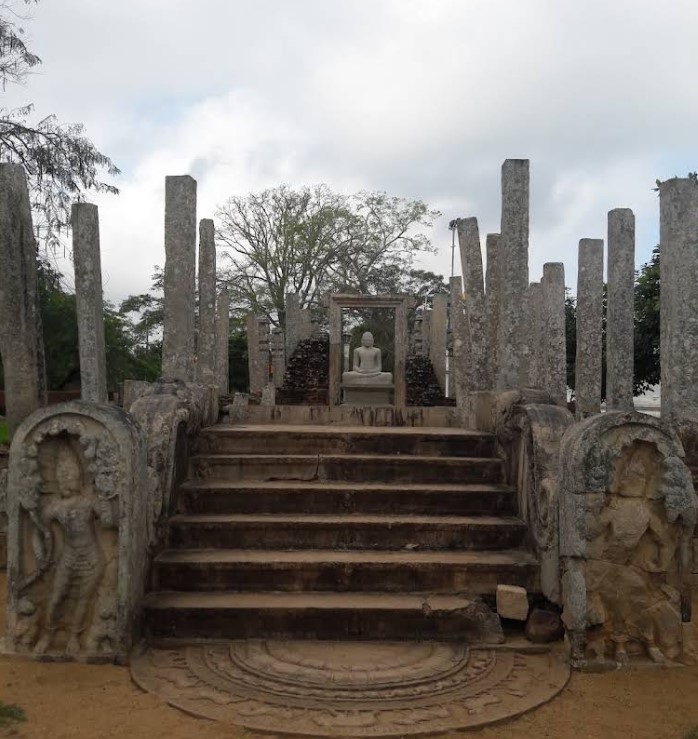
Some of the finest examples are at: Anuradhapura: The most conventional moonstones with full symbolic bands.
Polonnaruwa: More refined designs with greater realism and artistic proportion.
Abhayagiri Monastery: It is home to one of the most renowned and well-preserved moonstones.
Jetavanaramaya: Another site where one can see beautiful variations of the moonstone.
Over time, the design was altered. In the later Polonnaruwa period, some moonstones left out the bull from the set of animals, possibly in deference to Hindu sensitivities because the bull is a sacred animal in Hinduism. This change demonstrates the cultural and religious exchange which impacted art in different time periods.
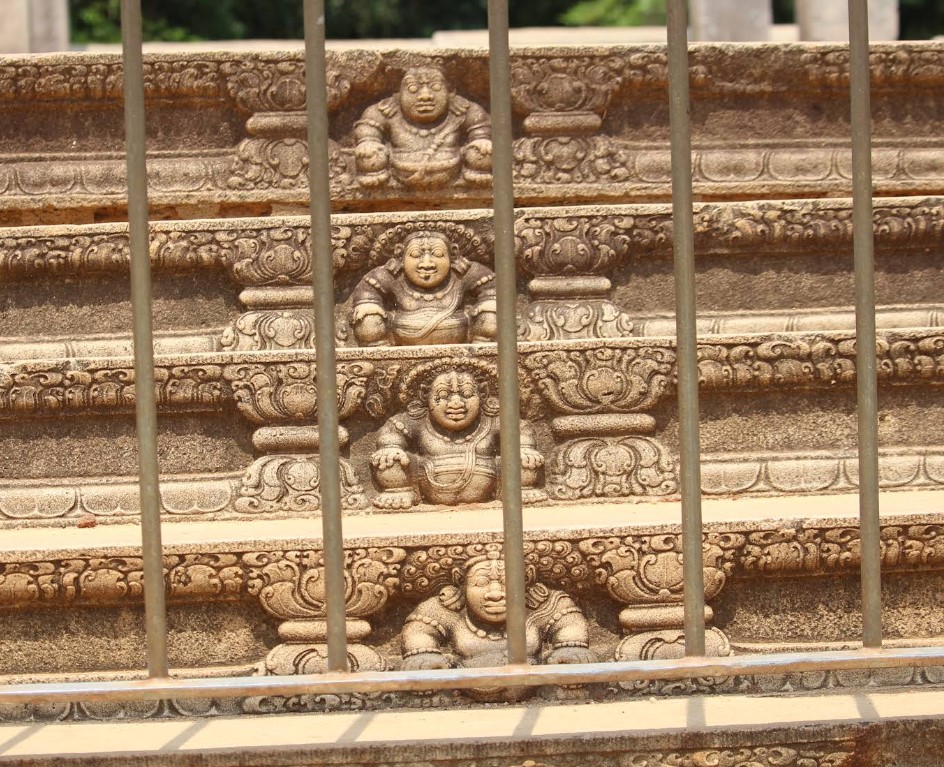
Cultural Significance and Legacy
The Sandakada Pahana is a singular feature of Sri Lankan identity. It is a compound of art, religion, and philosophy, expressing in stone what scriptures express in words. It is learned in schools, employed in tourist promotion, and invoked in literature and art as a symbol of heritage and spirituality.
Though moonstones are not used nowadays in contemporary religious structures, they are well conserved in ancient remains and museums. They represent the era when religiosity and arts were synonymous with one’s life.
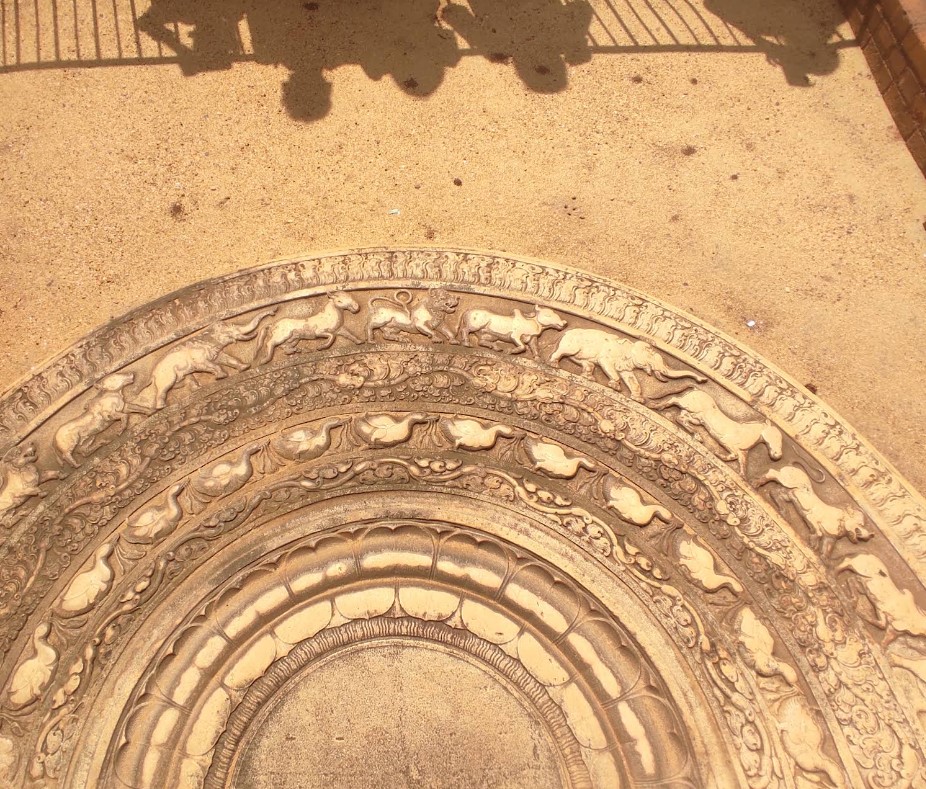
They also influence modern arts and design. At times, their replicas are placed in gardens, meditation halls, and public space as a mimetic representation of peace and mindfulness.
Conservation and Preservation Efforts
Most of the moonstones have survived for over a thousand years, but they are subject to the threats of weathering, vandalism, and tourist pressure. The conservation is being carried out by the Department of Archaeology of Sri Lanka with the help of UNESCO and other heritage organizations. Conservation includes: Physical protection from erosion. Restoration of the damaged portions. Documentation through photography and 3D scanning.
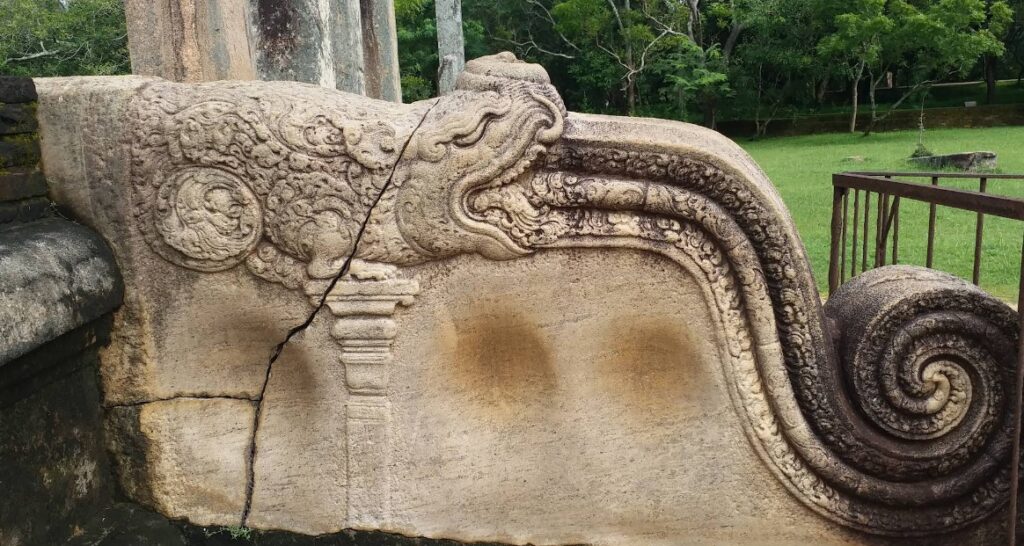
Public awareness to make people understand the cultural significance of these monuments.
Preserving the Sandakada Pahana guarantees that future generations will be able to enjoy the wealth of Sri Lanka’s religious and artistic heritage.
Where Is the Sandakada Pahana?
- The most famous Sandakada Pahana is found at the Abhayagiri Monastery complex in Anuradhapura.
- You can also see beautiful examples at:
- Jetavanaramaya
- Thuparamaya
- Ruwanwelisaya
- Lankaramaya
These sites are located close to one another in the Sacred City area of Anuradhapura.
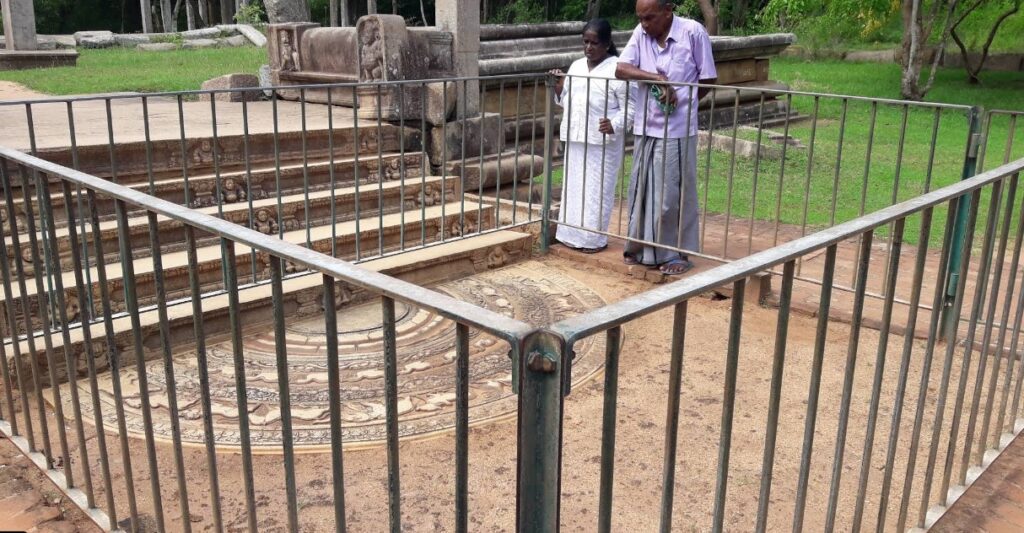
How to Get to Anuradhapura (and the Moonstones)
From Colombo to Anuradhapura:
1. By Private Car or Taxi
- Distance: ~205 km
- Travel Time: ~4–5 hours
- Route: Colombo → Negombo → Kurunegala → Dambulla → Anuradhapura
- Most Comfortable and Flexible Option
By Train
- Route: Colombo Fort ➝ Anuradhapura Station
- Duration: ~4.5–6 hours
- Train Types: Intercity Express, Regular
- Tips: Reserve a seat in 1st or 2nd class. From the station, take a tuk-tuk to the Sacred City (10–15 min).
By Bus
- From: Colombo Central Bus Stand (Pettah)
- To: Anuradhapura Bus Stand
- Duration: ~5–6 hours
- From Bus Stand to Sites: Tuk-tuks and bicycles are available for hire.
How to Get to the Moonstones Once in Anuradhapura
- Transportation: Tuk-tuk, bicycle, or walking
- Entry Fee (for foreigners): USD 25–30 (covers Sacred City access)
- Best Locations:
- Abhayagiri Monastery (for the most iconic moonstone)
- Jetavanaramaya (for a large and artistically refined example)
- Archaeological Museum (to see preserved pieces and learn about the history)
Best Time to Visit
- Early Morning or Late Afternoon – cooler weather and fewer crowds
- Avoid midday sun—temperatures can be high, especially in dry seasons.
